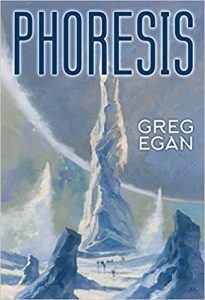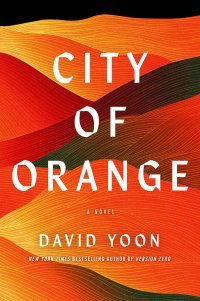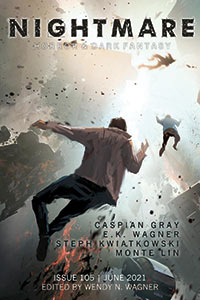Russell Letson Reviews Phoresis by Greg Egan
 Phoresis, Greg Egan (Subterranean 978-1-59606-866-7, $40.00, 163pp, hc) April, 2018.
Phoresis, Greg Egan (Subterranean 978-1-59606-866-7, $40.00, 163pp, hc) April, 2018.
Greg Egan’s Phoresis is, at around 40,000 words, a long novella and close to the same length as many of the mass-market, full-length paperback novels I grew up on. Into that relatively small space Egan has packed the story of several multiple-generation, low-tech engineering projects that range from geoengineering to interplanetary exploration and colonization, while also creating an exotic planetary system and non-human characters who, despite their physiological strangeness, clearly model psychological and intellectual traits to which we might well aspire.
But I get ahead of myself. I suspect that the story is meant to be puzzled over – it is, in any case, generally thrifty with its expository passages. Nevertheless, we get some essential orienting details early on. The tide-locked twin worlds Tvíbura and Tvíburi orbit each other closely enough that the inhabitants of Tvíbura can make detailed telescopic examination of Tvíburi’s surface. On both bodies, a crust of rock and ice covers liquid oceans warmed by tidal stresses, and on Tvíbura the roots of ocean-based “Yggasdril trees” break through the ice, allowing geysers to bring to the surface materials for the soil and air that support a sparse and irregular ecology and a hardscrabble farming culture, constantly struggling to avoid starvation. The planets are small enough that Tvíburans can make the Great Walk around their world in thirty days, and so close to each other that one of the book’s great engineering works – a tower that reaches beyond the atmosphere and partway to the opposite world – is possible.
The Tvíburans would seem to be humanoid, though they differ seriously from us in metabolism and especially in reproductive physiology. Nevertheless, they come across as psychologically “human” in important ways: they are gregarious, curious, imaginative, methodical, ingenious, and persistent. Unlike us, they apparently lack large-scale conflict, perhaps because they are all women (the squabbling, competitive male components of their strange reproductive system are not quite sentient), and while there can be debates and disagreements, there are no wars, despite resource shortages that would have humans at each other’s throats over the first missed meal.
In Part One, Freya (most of the Tvíburans are given recognizable human names) speculates on schemes that might generate more life-giving geysers, but finally imagines an even more ambitious project: to build a tower high enough to allow people to travel to Tvíburi, where resources might be more easily accessible. In Part Two, four generations later, the first six explorers catapult from the completed tower, crossing vacuum to descend via glider to Tvíburi, where they face the challenges of a world whose ecology differs from that of home, and where one of them devises another way of crossing the space between the worlds. Part Three completes the there-and-back-again pattern, as a descendant of the pioneering settlers crosses from a tower built on Tvíburi to the home world, where she finds that the stay-at-homes continued to address their problems with the same patience and determination that built the original tower.
The story is intensely procedural, driven by two sets of processes: conceiving, planning, and organizing the various projects and then actually building and using them. The speculative-engineering side of the novel almost evades the feeling of fiction – it deals with orbital mechanics, strength of materials, the load-bearing qualities of ice, and such practical details. The drama arises from the social setting. Building the tower and exploring Tvíburi are cooperative, entirely voluntary projects that will not see completion or payoff in the original planners’ and workers’ lifetimes, and execution demands both vision and sacrifice on the part of those who will not see the work’s end. Long before the tower she envisioned is completed, Freya says,
This thing isn’t ours any more. . . . If it ever was. All we can leave behind is what we’ve learned: about the strength of ice, about the way the roots grow, about gravity, torques and forces. The rest is in other people’s hands, and the ones who’ll matter most haven’t even been born yet.
In this, Phoresis is strongly reminiscent of Incandescence (2008), in which an alien culture struggles to understand and survive in an extreme and exotic environment with limited tools and resources; and also of the intensely planned, much-debated cooperative projects of The Four Thousand, the Eight Hundred (2016). This is the Tower of Babel, but without the hubris and confusion: a parable not of division and failure but of the triumph of ingenuity and selflessness – of hope.
Russell Letson, Contributing Editor, is a not-quite-retired freelance writer living in St. Cloud, Minnesota. He has been loitering around the SF world since childhood and been writing about it since his long-ago grad school days. In between, he published a good bit of business-technology and music journalism. He is still working on a book about Hawaiian slack key guitar.
This review and more like it in the April 2018 issue of Locus.








